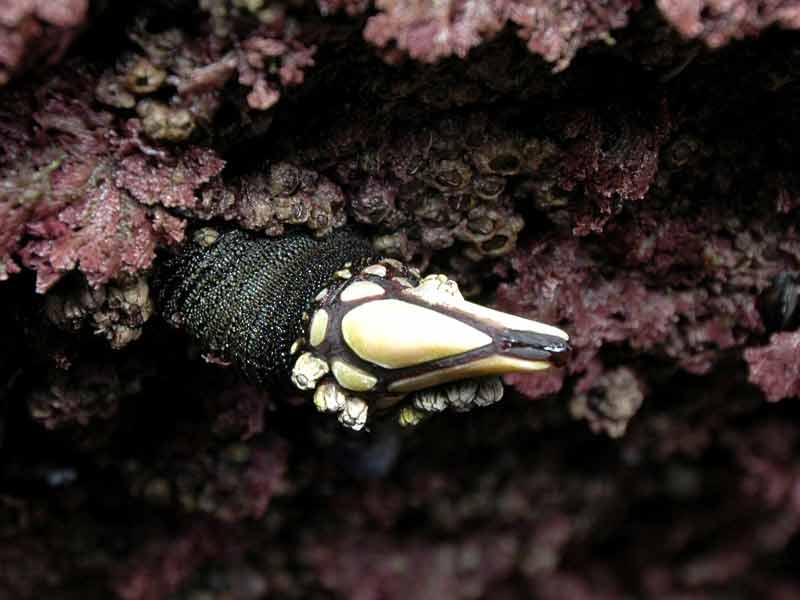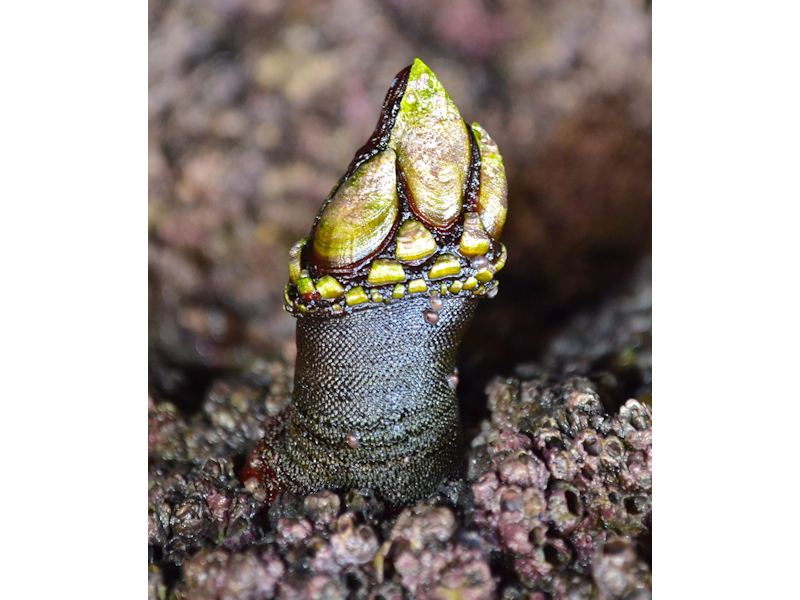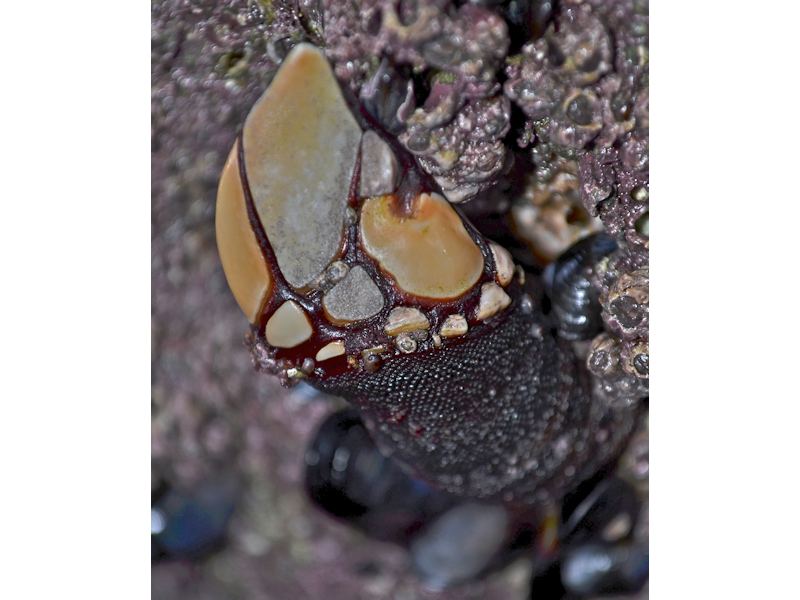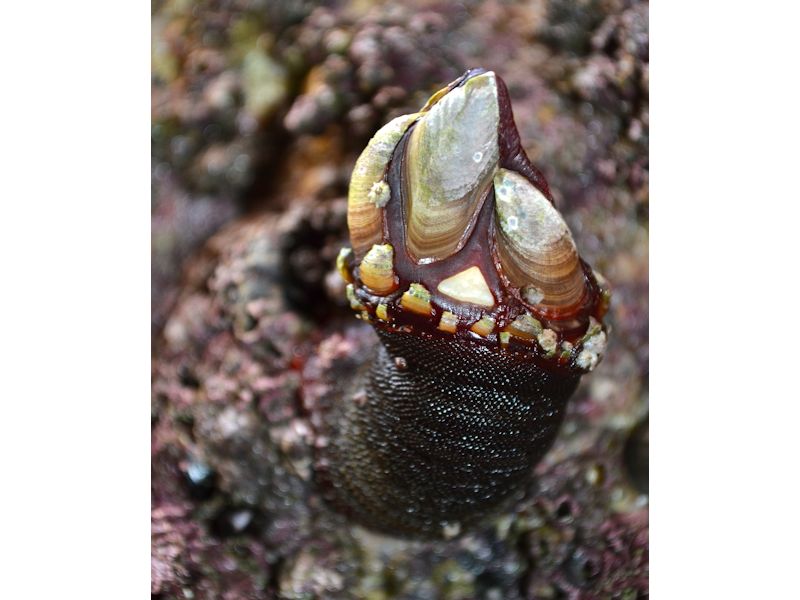Rocky shore goose barnacle (Pollicipes pollicipes)
Distribution data supplied by the Ocean Biodiversity Information System (OBIS). To interrogate UK data visit the NBN Atlas.Map Help
| Researched by | Morvan Barnes | Refereed by | Admin |
| Authority | (Gmelin, 1790) | ||
| Other common names | - | Synonyms | Pollicipes cornucopia (Gmelin, 1790), Mitella pollicipes (Gmelin, 1790) |
Summary
Description
Pedunculate, goose or goose-neck barnacles have a flexible, muscular stalk, known as the peduncle, which supports the main body known as the capitulum. In Pollicipes pollicipes the capitulum is triangular in nature and white-grey in colour. A number of plates of different sizes protect the capitulum, increasing to over 100 in number with age. The plates may reach up to 0.5 mm in length. Six pairs of thin, feather-like cirri can be seen to arise from within the mantle cavity and are used for feeding. The peduncle may reach over 10 cm in length and is strongly attached to the substratum despite repeated battering in exposed conditions.
Recorded distribution in Britain and Ireland
Although found predominantly further south, Pollicipes pollicipes does extend its geographical range as far north as the south-west British Isles and possibly south-west Ireland.Global distribution
-Habitat
Pollicipes pollicipes can be found in groups attached to rocks on exposed rocky shores and cliffs. They have also been known to occur on the hulls of wrecked ships, various wooden structures and driftwood.Depth range
-Identifying features
- Flexible muscular stalk (peduncle) firmly attached to the substratum.
- Body (capitulum) covered in many white-grey plates of different sizes.
- Adult peduncles may reach over 10 cm in length.
Additional information
Pollicipes pollicipes may be host to other juveniles of the species, or even adults of other barnacles, which may settle on the peduncle or capitulum of the adult Pollicipes pollicipes.
Listed by
Bibliography
Barnes, M., 1996. Pedunculate cirripedes of the genus Pollicipes. Oceanography and Marine Biology, 34, 303-394
Hayward, P.J. & Ryland, J.S. (ed.) 1995b. Handbook of the marine fauna of North-West Europe. Oxford: Oxford University Press.
Howson, C.M. & Picton, B.E., 1997. The species directory of the marine fauna and flora of the British Isles and surrounding seas. Belfast: Ulster Museum. [Ulster Museum publication, no. 276.]
Southward, A.J., 2008. Barnacles. Synopses of the British Fauna, (New Series) (ed. J.H. Crothers & P.J. Hayward), No. 57.Shrewsbury, Field Studies Council
WoRMS 2007. The World Register of Marine Species (WoRMS). http://www.marinespecies.org, 2008-10-31
Datasets
Fenwick, 2018. Aphotomarine. Occurrence dataset http://www.aphotomarine.com/index.html Accessed via NBNAtlas.org on 2018-10-01
National Trust, 2017. National Trust Species Records. Occurrence dataset: https://doi.org/10.15468/opc6g1 accessed via GBIF.org on 2018-10-01.
NBN (National Biodiversity Network) Atlas. Available from: https://www.nbnatlas.org.
OBIS (Ocean Biodiversity Information System), 2025. Global map of species distribution using gridded data. Available from: Ocean Biogeographic Information System. www.iobis.org. Accessed: 2025-08-08
Citation
This review can be cited as:
Last Updated: 10/06/2008






